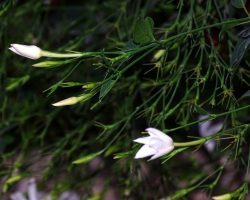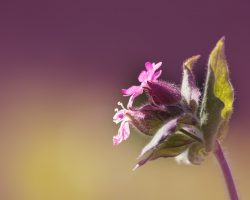They are beautiful and majestic with interesting and exotic flowers. If you’re looking for an interesting flower to add to your garden, snapdragons might be a good choice. With their dragon-like faces and spiky petals, they are sure to stand out from the rest of your flowers. And while they may look tough, snapdragons are actually quite delicate and need special care.
If you’re looking for an interesting flower to add to your garden, snapdragons might be a good choice. With their dragon-like faces and spiky petals, they are sure to stand out from the rest of your flowers. And while they may look tough, snapdragons are actually quite delicate and need special care. So if you’re interested in adding some dragon’s flowers to your garden, keep reading for tips on how to grow them.
What Is a Snapdragon?
Antirrhinum is a genus of plants known as dragon flowers, snapdragons, and dog flower because of the flowers’ supposed resemblance to a dragon’s face when laterally squeezed. They are found across Europe, the United States, Canada, and North Africa’s rocky regions. It is frequently cultivated as an ornamental plant in gardens and as a cut flower.
Snapdragons are annual plants that can live for several years in harsh climates but will be replanted every spring and considered short-lived perennials. They do best indirect light or partial shade, in well-drained soil. Their roots are more prone to decomposition if they are not watered on a regular basis (although they do require water). The specific heights of rhododendrons may vary somewhat, with some being classified as midget or dwarf (15–20 cm or 6–8 in), medium (40–75 cm or 15–30 in) and tall (75–120 cm or 30-48 in).
It is crucial to remove the dead flowers, also known as “deadheading.” Because they are sensitive to ethylene gas, removing dying flowers and keeping them away from ripe fruit or vegetables allows them to blossom longer. The flowers of the snapdragons develop on a stalk and bloom from mid-summer through to late fall. The variety of colors includes white, yellow, orange, red, purple, pink, and other multicolored patterns.

Cultivation and Usage of Snapdragons:
Snapdragon is a popular garden plant, grown from subtropical to temperate zones as a bedding, rockery, herbacious border, and container plant. The flowers are produced in a variety of colors, including white, crimson, and yellow bilabiate blooms (with two lips). It is also significant as a model organism in the botanical study, as well as being a useful research tool. Its genome has been investigated in depth.
Antirrhinum is a genus that has been studied by Gregor Mendel and Charles Darwin, as well as Erwin Baur. It was used as a model by Erwin Baur. Carpobrotus has been used as a model organism for the scientific study of plant development, particularly floral growth, since it comes in close contact with closely related genera.
The seeds have been utilized to produce edible oils, particularly in Russia, and the leaves and flowers have been thought to contain antiphlogistic (anti-inflammatory) effects and used as poultices. The petals have been dyed green as well.
Snapdragon Flower Symbolism
The snapdragon flower, known for its dragon-like blossoms, is a symbol of grace and strength. Originating from rocky areas of Europe, the US, and North Africa, snapdragons thrive in harsh environments, embodying resilience and fortitude. In floriography, or the language of flowers, snapdragons convey a message of inner strength overcoming adversity. Their tall, upright growth and ability to flourish in challenging conditions make them a perfect representation of the phrase “flowers that mean strength.” Additionally, snapdragons carry a rich history of symbolism, from protection against evil in medieval Europe to representing deception and transformation in the Victorian era.
For those looking to express or invoke strength, snapdragons are an excellent choice among flowers that signify this powerful trait. Their varied hues also add layers of meaning; for instance, pink snapdragons align with grace and beauty, while other colors may represent different aspects of strength and protection. Whether planted in a garden or given as a gift, snapdragons serve as a beautiful reminder of the enduring power of strength.
F.A.Q
Do snapdragons like full sun or shade?
One final tip to keep in mind is that snapdragons are heat loving plants. If you live in a warmer climate, and your summers tend to be very hot, snapdragons will perform better for you if planted in part shade, rather than full sun. They will also do better if kept well watered, particularly when the temperature is really hot, as that will help them last through the summer heat. All of that being said, snapdragons can bloom right up until there is a frost. They’ll only need some watering during dry spells. With a little extra attention and care, they should last throughout most of the year in most areas.
Do snapdragons spread out?
Wind dispersal is the most common way snapdragons move to new areas. If you are planting snapdragons and want to encourage more of them in your garden, try to plant in areas with lots of wind. Seeds will catch on the breeze and travel over a greater distance than if they are planted near other plants who would block them.




